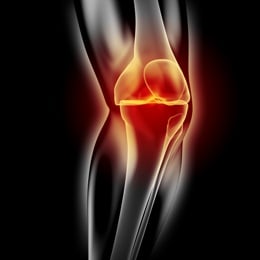
Football fans are generally familiar with how devastating a knee injury can be. ACL injuries seem to occur frequently on the gridiron. However, the potential for knee injuries occurring on the job for people who work in health care, the construction industry, in an office, or any other setting may not be as well known.
The fact of the matter is, more than 100,000 workers suffer knee injuries on the job each year, according to the Bureau of Labor Statistics. Knee injuries are highly common across all occupations, ranking third among all serious work injuries and accounting for 5 percent of all work-related injuries that require a trip to the emergency room.
Day-to-day activities, including walking to meetings or moving products in a facility, place great stress on the knee. Climbing a ladder, or even climbing into the cab of a semi, places stress and pressure on the knee. We use or knees to sit down or stand up from a chair. With its constant use in our every movement, the knee is susceptible to serious injury across all occupations.
Common causes of knee injuries Include:
- Falls, including slip and fall accidents and falls from height
- Overexertion, including wear due to repeat motion, strain while lifting objects, as well as injuries that result from sudden movements or twisting motions
- Objects striking the knee
Common types of knee injuries Include:
Fractures – the knee joins several bones: the tibia (commonly referred to as the shinbone), the femur (commonly referred to as the thighbone), and the patella (commonly referred to as the kneecap. Forces may cause any of these bones to fracture.
Meniscal injuries – The meniscus is essentially cartilage that provides a cushion between the shinbone and the femur. Treatment for a torn meniscus ranges from rest, ice or using a knee brace – to a surgical procedure to repair or remove the meniscus.
Tendon injuries – Tendons in the knee connect muscles to the bones associated with the knee joint. These serve to move the knee. Overexertion or a direct blow may result in a ruptured, sprained or torn tendon.
Fractures – the knee joins several bones, the tibia (commonly referred to as the shinbone) the femur (commonly referred to as the thighbone), and the patella (commonly referred to as the kneecap. Forces may cause any of the bones to fracture.
Ligament injuries – The knee has an array of ligaments that connect the shinbone to the thighbone to add stability to the knee. Ligament injuries may involve sprains or tears to the anterior cruciate ligament (ACL), the posterior cruciate ligament (PCL), the medial collateral ligament (MCL), or the lateral collateral ligament (LCL). Repairing these injuries may require surgery.
Getting assistance to recover from a knee injury
Your ability to move around, as well as to work, often requires a healthy knee. Lost time from work while recovering and the medical bills involved with treatment and rehabilitation can stress an overwhelmed budget. If your knee injury is related to a work-related accident or job-related activities, you may be entitled to workers’ compensation benefits. Consulting with a skilled attorney who has a command of Minnesota workers’ compensation law is an important first step after suffering injury.

